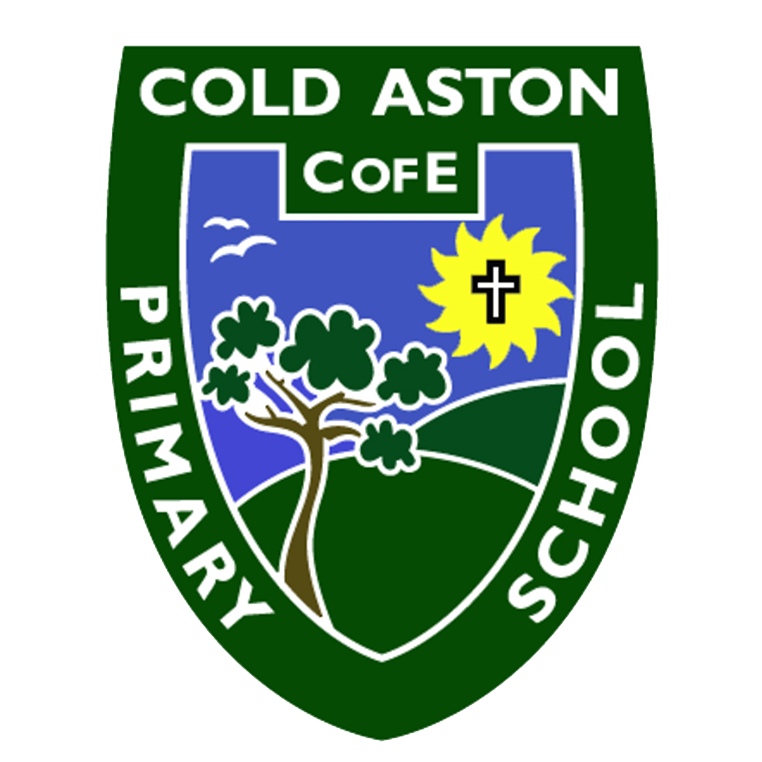
English
Cold Aston C. of E Primary School is determined that every pupil will learn to read, regardless of their background, needs or abilities.
Stories, poems, rhymes and non-fiction are chosen for reading to develop pupils’ vocabulary, language comprehension and a love of reading.
Reading and Phonics
Reading is core to a lot of what we do here at Cold Aston. A detailed progression of how reading is taught can be found in the reading progression grid. However, each class also produces a reading road map which can be found on the class pages. These road maps show all the books that we incorporate into our learning throughout a term.
The reading scheme in our school follows our phonics teaching sequence from 'Essential Letters and Sounds'. We use coloured book bands to distinguish between the different levels of books, which match phonics sequence and phases, some phases are particularly large so there may be more than one colour band focused on the sounds from this stage.
Children should be able to decode using the phonics they have be taught previously to read their book. If a book contains sounds or tricky words that have not be taught yet there will be a sticker on the front cover that says 'read this book together'. We ask you support your child/ren to read certain words and sounds that have not be taught yet.
We would like you to encourage your child to re-read the books sent home so that they read their book at least twice. The three stages of reading a book to develop fluent readers are:
Decoding: the process of segmenting words into known sounds and blending them for meaning.
Prosody: reading fluency with appropriate pitch, pace, phrasing and expression.
Comprehension: taking meaning from the words and story line.
These steps are sequential and result in the children becoming fluent readers who are able to take meaning from the books they are reading. Fluent reading aids comprehension.
Writing
Here at Cold Aston we use the ‘Write Stuff’ strategy pioneered by Jane Considine for the structure of our writing lessons. Our English Long Term Plan sets out our genre focus across each term, with grammar and punctuation skills matched so they are taught and revisited both discretely and within a writing context. The ‘Write Stuff’ prioritises a vocabulary-rich approach to collecting vocabulary and phrases through ‘chotting’ and modelling as a class, to explore literary techniques and practice editing and improvement when ‘sentence stacking’. In addition, we prioritise independent writing through additional writing opportunities each week to ensure that the children not only have a chance to use modelled and adapted techniques but they are also encouraged to use their own imaginations and use literary techniques they have explored previously. Experience sessions are weaved through our units, to provide the children with immersive experiences linked to their text. At the end of each unit, the children produce a final piece of writing for the genre they have been focusing on. For more information on which texts each class cover, please look at the class pages where you will find our ‘Reading Journey’ for each term.
Spelling
In EYFS and KS1 our spelling teaching is taught through the use of the ELS Phonics Scheme detailed above. Each lesson has a taught session using the ELS powerpoints, which is followed by handwriting and spelling applying their new sound/s each day.
In KS2, we use the Rising Stars Spelling Scheme which provides a sequential learning sequence that revisit prior learning and teaches the National Curriculum Spelling Lists. The use of this sequence allows ‘progress from phonics with a rigorous learning pathway that builds knowledge year on year’.
Handwriting
At Cold Aston C of E we use the NCSF Handwriting Progression to teach handwriting. The children start mark-making in EYFS through Drawing Club and are taught to form letters in print form alongside their phonics sounds for the week. Children progress to pre-cursive in KS1 and continuous un-joined cursive, before joined cursive when they are ready to do so. We take pride in our presentation and being respectful of our resources including exercise books. ‘Wow’ work is celebrated for varying reasons including progress and perseverance in presentation, and is celebrated in each class.

